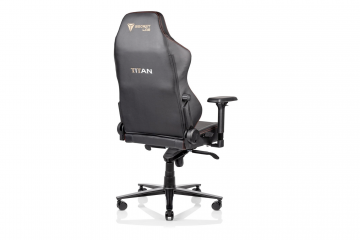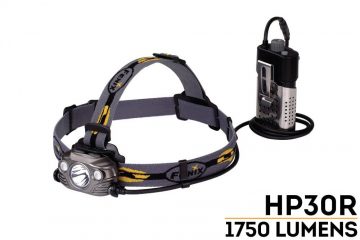Whether you fish recreationally or are a sponsored fisherman, because your fishing rods and reels are your major instruments for catching fish, it is critical to understand how to maintain them properly.
Nothing is more infuriating than losing a prize fish to a broken rod tip that could have been avoided. Fishing gear and equipment will last far longer if you take the time to care for them properly.
Maintenance and Repair Tips
As with any maintenance, caring for your fishing equipment can be a laborious task that’s all too easy to put off, particularly after a lengthy fishing excursion. Fishing rod repair and maintenance does not have to be a difficult task.
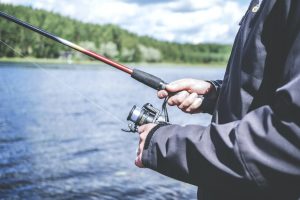 We have created a list of tips to help you maintain the best condition for your fishing rod.
We have created a list of tips to help you maintain the best condition for your fishing rod.
Cleaning Reels
The reel is an angler’s most crucial piece of equipment. As such, you should handle it with exceptional care. The amount of time you spend cleaning the reel depends on the sort of water you fish and how often you fish it.
If you fish in freshwater, you should clean your reel every five trips at the absolute least. If you are fishing in saltwater, you must clean your reel after each trip.
Following your excursion, spray your reel with a mild cleaning such as the ones listed above. Avoid soaking it since sufficient moisture can seep into the gear system, causing long-term harm.
After scrubbing everything clean, use a little brush to get in between everything and remove any leftover dirt and filth. If you believe the reel is sufficiently clean, rinse it off with low pressure to ensure no water enters the drag.
To avoid rust, properly rinse off the cleaner and completely dry the reel.
After ensuring that everything is completely dry, spray the reel with reel oil or WD40.
The backside of the spool is often overlooked. To avoid rust and corrosion, always remove the drag knob and wipe the bottom of the spool throughout the cleaning procedure. Grease the main shaft within the spool before reinstalling it for the best efficiency.
You should only have to do this once a year, but you should consider it if you have never done it before. Servicing your reel ensures that it functions optimally and lasts as long as you need.
Cleaning Rods
Seawater fishing rods need a little more maintenance than freshwater rods due to the increased corrosion caused by saltwater. When you return from a trip, remove any line from the guides and detach the reel from the rod. Warm fresh water and a mild all-purpose cleaner should be used to clean the rod.
Rinse them well to remove any built-up salt deposits. Additionally, thoroughly inspect the guides. Scrub them down with a little wire brush. Otherwise, they will rust and deteriorate rapidly.
Cleaning Rod Handles
This is primarily for aesthetic purposes, but a filthy handle can make the rod more difficult to manage while fighting a bigger fish. If you fish saltwater, the water can also wreak havoc on the handle.
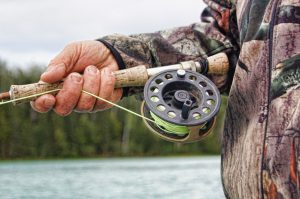 The most effective technique of cleaning the rod handle is to use rubbing alcohol to scrape and wipe it down. Repeat this procedure until everything is gleaming.
The most effective technique of cleaning the rod handle is to use rubbing alcohol to scrape and wipe it down. Repeat this procedure until everything is gleaming.
Repairing Rods
With the proper tools and materials, removing and replacing a damaged guide is not a difficult process. It is the “appropriate equipment and materials” section that stumps inexperienced rod repairmen.
Take it to professional rod repairs if you want the completed repair to appear precisely as it did when it was new. They can precisely match the rod guide, use the same thread size and color as the manufacturer, and finish the process with the same varnish or thread coating.
On the other hand, all you need is to get the rod back in the game and not mind the patchy repair. You probably already have the necessary material on hand.
While several rod-fixing instruments are available to assist you, the only gear you will need is a box-cutter-style razor knife to remove the broken guide and cut the wrapping thread. A braided fishing line, a roll of tape, some super glue, and an adequately sized rod guide are included in the supplies list.
After removing the damaged guide, tape the new guide around one of the guide’s feet. Then, using the braided line like a thread, tie the remaining foot to the rod using the braided line.
Rather than using rod varnish to coat and secure the wraps, dab a few drops of super glue on the threads. While the adhesive sets and dries, spin the rod for several seconds to complete the repair. It may not seem to be brand new, but it will function as if it were.
Cleaning Reel
Saltwater can be quite damaging to reels if they are not cleaned properly. While fishing, start cleaning the reel by spraying it with fresh water and wiping it down.
 Once you have returned home from a day of fishing, cut any remaining line and detach the reel from the rod. Rinse the rods well with moderate pressure and a reel cleaner such as the alternatives mentioned above. Utilize a tiny brush to reach into tight spaces, and be sure to rinse the brush afterward to avoid spreading salt completely.
Once you have returned home from a day of fishing, cut any remaining line and detach the reel from the rod. Rinse the rods well with moderate pressure and a reel cleaner such as the alternatives mentioned above. Utilize a tiny brush to reach into tight spaces, and be sure to rinse the brush afterward to avoid spreading salt completely.
After giving it a good cleaning, rinse the reel and completely dry everything. Store the rod and reel only once they are totally dry.
Cleaning Fishing Guides
If your guides accumulate a lot of build-ups, it can cause significant damage to your line, culminating in breaking. This implies that you will lose a fish. As the line runs in throughout the day, a build-up of minerals and flora occurs, and you want to ensure that you remove it.
Clean the guides with a Q-tip or a gentle brush dampened with Simple Green or WD-40. The most effective way is to carry these things with you when fishing. However, it is OK to wait till you get home.
Maintaining Lures
It is fantastic when you discover a lure that works and wants to keep it around for a long time, or maybe you want to revive an old lure. If possible, remove the hooks before touching up your lures to prevent being snagged by one. It is a good idea to start the hook using a tiny pair of pliers and then carefully work it off the split ring. Ensure that whenever you change the hooks that you use, you use the correct size hook.
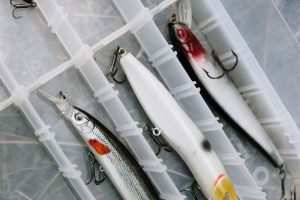 Rinse the lures under warm running water. After that, clean any hard dirt off the lure with a toothbrush or other tiny brush. Lubricate the joint or other moving components lightly. Spray wax can be used to polish old lures that are going on the shelf.
Rinse the lures under warm running water. After that, clean any hard dirt off the lure with a toothbrush or other tiny brush. Lubricate the joint or other moving components lightly. Spray wax can be used to polish old lures that are going on the shelf.
Other Tips
Try keeping the fishing rods in your boat’s rod locker when transporting or use mesh rod covers. Not only can fishing rod covers save your lines from being tangled, but they also act as a cushion for your blanks and guides. Mesh fishing rod covers are available in various colors, allowing you to color-code each rod and instantly locate the one you need.
Maintain straight and side-by-side rods when on the boat. Place them in rod holders or rod lockers. Due to the vibration generated by your boat, blanks, guides, and reels might get damaged, nicked, and tossed about.
Storing
Rod sleeves are ideal for storing rods that are not in use. This safeguards them and prevents them from becoming twisted. They come in a variety of sizes and colors. They are inexpensive, so get the ones that suit your rods. Transport the rods in cases from the garage, hotel room, or pickup to the boat.
Always keep your rods vertically whenever possible. This maintains the blanks in order. If necessary, never lay them down with a bend in the blank. The rod will eventually “take” that bent, and it will be damaged.
Never store a rod in a hot place like your car or truck. Heat can weaken them. And, never lay your rod over something hard like the boat gunnel or something in your truck and then let it bounce up and down on the same spot. That will weaken the blank and could cause it to break when it is under pressure.
Store your fishing equipment in a rod storage rack that prevents your rods from curling and the components from colliding. Avoid putting your rods against each other and keeping them upright in the corner of your garage; this significantly increases the risk of damage to the reels, blanks, guides, and tips.
If you are going to be storing your reels for more than a day or two, relax the drags to prevent the fishing line from breaking or pulling on your rods.
Conclusion
With this excellent advice, you should have no trouble maintaining the condition of your fishing gear both inside and outside the boat. After all, a memorable fishing trip always starts with the proper tools for the task. Good luck!
Photo Credit:
https://pixabay.tumblr.com/
https://www.pexels.com/



